Last week I attended my first shooting competition, a local 2-gun match. As shocking as I’m sure it is that every writer isn’t a frequent competitor, I wanted to share what I learned from the match to help anyone that’s on the fence. Before we get into that I just want to clarify, shooting this match was the most fun shooting I’ve ever had in my entire life. I grew up with the typical pellet and BB plinking at soda cans in my backyard, shot a large array of guns as a Machine Gunner in the Marines, and have shot even more since I was discharged in 2015. This one day of shooting trumps all that past shooting, no contest. If you like shooting guns at all you will love shooting a competition.
If I hadn’t had a few experienced competitors as friends some things mentioned below would have been missing, and they may have taken from the joy of the match. Thankfully they answered all my questions and gave helpful advice for things I hadn’t considered. Some things may seem blatantly obvious, if you already know something that’s one less excuse for you not to hit the next match.
The way a 2-gun match works is everyone shoots each stage of the match with their pistol and their rifle, and the stage dictated what targets were shot with which gun and when. As you can see in the video, some stages began with the pistol and once those targets were shot it was dumped into a barrel and then the shooter moved to a new position and picked up their rifle. Another stage the rifle was required to be slung on the body while engaging with the pistol, etc. Each stage had a different order, and if you’re ever unsure just ask. The RO will be more than happy to make sure you have all questions answered, asking “Shooter Ready” is not just a heads up for you to get ready. It’s your chance to ask any further questions you might have before the timer starts. Don’t be afraid to ask, you can always ask during the shoot but they might not be able to help, and even if they can the timer won’t stop. I actually had to ask if two steel targets needed to be engaged towards the end of one stage, if I had paid attention earlier and asked before the stage began I might have saved a little time.
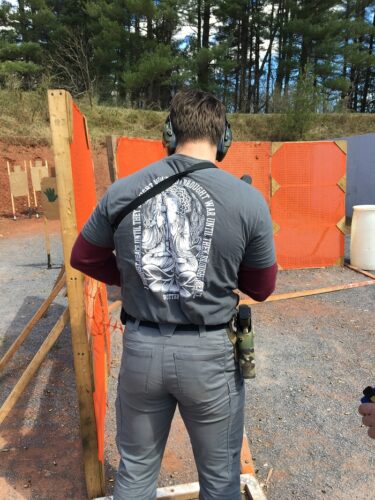
1. Safe Gun Handling
Honestly, if you can handle a firearm safely it’s really all you’ll need to make it to a match. Aside from the fact that unsafe actions result in an immediate disqualification, its dangerous for you and anyone you shoot with, at a competition, your home range, or anywhere else you handle a firearm. Understanding the four essential safety rules and adhering to them in everything you do is essential for any interaction you have with a firearm, whether at a match or anywhere else.
That being said there are a few things it would be beneficial to practice before attending a match. Practicing certain manipulations will not only give you more confidence but will also ensure you are doing them safely under stress. Aside from the actual firing of the gun, drawing efficiently, reloads, immediate action, and holstering the firearm safely will be very helpful for shooting your first match. Also knowing your offsets can be extremely helpful. As you can see in the first stage I struggled with the clay birds at five yards with my rifle because I was not used to having to compensate for targets so close. It can sometimes be difficult to find a range that has the flexibility to allow for practicing your offsets at such close distances. Ballistic calculators can be a big help, and honestly it’s your first match. It’s ok to miss some targets, I know I missed quite a few.
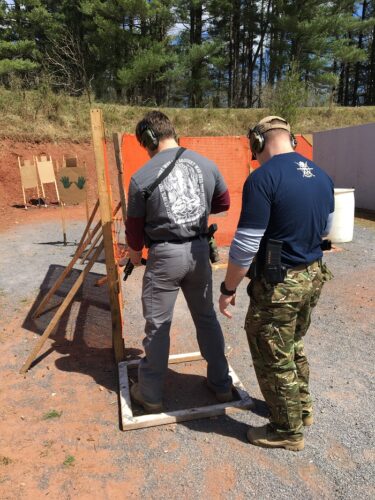
2. Practiscore Account
I didn’t know anything about Practiscore before I started all of this. I still don’t know much. Two important things about it, its free and you need it to sign up for most matches. Essentially its an enormous database, you can look up anyone’s past shooting scores, search for matches, and most importantly, sign up for matches through them. Depending on how popular the match is and how limited the slots are, it is important to sign up for the match as soon as registration is available. I think the two-gun match I went to filled up in a matter of hours. If you’ve found a match you want to shoot, know when registration opens, and plan to jump on that sign-up list as soon as it opens.
Another feature that I had no idea about was squad listings. Your squad will be the group of shooters you shoot with throughout the day. For example, at our two-gun match there were five stages and 51 shooters (there was a walk on, that’s normally discouraged or not allowed). Rather than having 51 shooters randomly moving around the stages, the shooters are split into 5 squads of 10, and I shot with those 9 other guys for the rest of the day. Awesomely enough I got to shoot with several friends and made some more in my squad shooting throughout the day. Even if you don’t know anyone in your squad, everyone there loves guns and loves shooting. I have found that is the easiest way to make friends is having those things in common, and I’ve never been known as a social butterfly. So, if I could make conversation and form friendships, anyone can.
3. Know your Gear
Fighting with new gear on your home range can be an annoyance, fighting with it at a shooting match can be straight up depressing. Vetting your gear thoroughly beforehand allows you to focus on the actual shooting, not fighting to get things set up or working around your gear while you’re trying to shoot like you never have before. You don’t need match specific gear, or even anything built specifically for speed. A sturdy belt, a few mag pouches, and maybe a mag loader to speed up the loading process are all you really need. Practicing with what you have before the match will allow you to have confidence in your shooting and prevent you from having to fight it. This will go much farther than buying competition specific gear that you’ve never shot with before.
For example, my buddy Julian showed up to the match with the most epic set up any of us had ever seen, an M1 Garand with an Aimpoint red dot and a 1911 chambered in .45 to match. While he was shooting this match for fun and to be division specific to heavy metal, he practiced with it beforehand and it showed. His reloads were smooth, for the most part, and reloading a Garand compared to an AR or AK is a completely different affair. The 1911 was new to him, but he had made sure to practice with it multiple times before the match. With that practice he had figured out not just the nuances of the 1911, but also creative ways to store his Garand clips without a bandolier. And he still placed 26/51 with blatantly handicapped equipment!
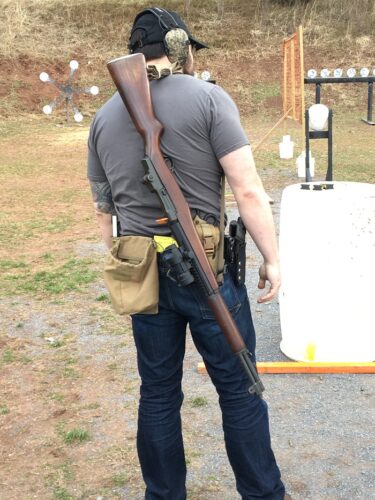
One final note on knowing your gear, holster retention can be a big deal. One stage required shooting from the initial position with your rifle and then sprinting 50 yards to a new rifle position, followed by a 25-yard sprint to finish off the stage with your pistol. The only guy in our squad to clean the first position never got to finish the stage because halfway through his sprint his pistol fell from its holster. It was not a low-quality holster either, its simply the fact that a dead sprint can be a lot to ask of a holster’s retention if it does not have some sort of active retention system. There are holsters made with easily adjustable retention knobs, I don’t have any experience with those, but they clearly work. Personally, for OWB, I love my fancy new Safariland. Nothing beats the sound of the ALS engaging or disengaging, it just makes the match that much more enjoyable. It also provides assurance that no matter what physical extremes the match takes me to, my gun is going to stay in the holster.
4. Know the Event
I didn’t know much about division or match specific rules. Thankfully the Match Director will provide most of this information for you. Read everything you can, there will be nuances to every range and match and will be organization dependent. Even if you’re an experienced competitor, make sure you at least skim the rules to make sure there’s no changes that might result in a DQ. We had two talented shooters eliminated from our squad early on because of a rule about holstering a hot firearm. While they did not perform any safety violations and holstering before moving was a standard procedure for their line of work and other match events, at this event it resulted in a DQ. We all hated it, we all wished we could ignore the rule when it happened, but as a shooter you’re pretty powerless to change the rules. To avoid something like this read the rules, ask questions, and ask again for clarification if you need it. Your Squad Leader won’t have any problem making sure you know the course of fire and anything else before you begin a stage.
5. Extra Ammo
I’m not sure if every match gives a round count recommendation, but I would recommend bringing more ammo than what is listed. For example, I believe our match listed 100 rounds pistol, 100 rounds of rifle ammo. I went through between 120-130 rounds of 9mm and a little over 100 rounds of 5.56. Sometimes you miss the target, it happens. Bring extra ammo, you don’t have to go crazy with a case of ammo, but an extra box or two takes little effort and can really come in handy.
There’s also the fact that someone else might run dry during the match. I’m not saying you should feel obligated to provide ammo for anyone that runs dry, but I know that if I had run out of ammo there would have been plenty of guys willing to share their ammo, so I could continue to shoot. That’s just the kind of people you’ll meet at matches, great people that just want everyone to have fun and shoot more bullets.
6. Clothing
Weather can be a big factor for matches. A lot of matches occur outside, and no matter how big the match is no one has control over the weather. Maryland weather in March is still pretty cold, add some wind and rain to it and our morning started out a little rough. I don’t happen to own a real rain coat, thankfully Master Shaw loaned me a spare of his, but it could have been pretty miserable without something to block the early wind and rain. Watch the weather forecast for your match times, and plan for the weather prediction to be wrong. As fun as shooting is, I’ve lost count of the number of times the joy of it was sucked away on Marine Corps ranges due to inclement weather and command’s refusal to allow clothing appropriate for the situation.
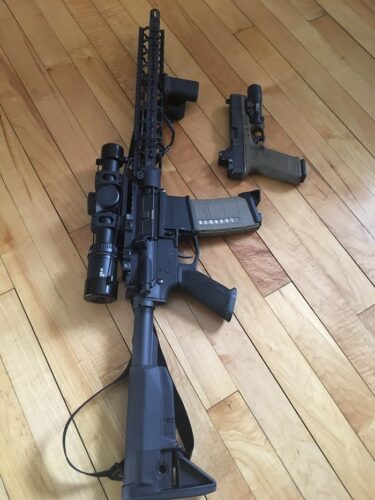
7. Snacks
I get hangry really easy, its not fun for me, and its not fun for anyone else. No matter how small the match is, you’re sure to need food and water at some point. Make sure you bring a few snacks, or even pack a meal for the match. Water is also a necessity even mild dehydration leads to reduced mental and physical performance. Bring more water and food than you believe necessary, it’ll allow you to enjoy the event far more if you have food and plenty to drink.
This is not a comprehensive list, merely some of the things I was glad to know and prepare for beforehand. I cannot overstate how much fun I had shooting this match. No one cares about how poorly you shoot, they all want you to shoot well and enjoy it. Everyone feels your pain if you’re struggling with a target, and experienced shooters will be more than happy to offer helpful advice to avoid struggling in the future. While the due date for my wife means I won’t be attending a second match for a while there are thousands of competitors out there willing to help a new shooter jump into the deep end. The Spotter Up shooting team is also very active, if you have any questions or see one of them at a match I know they’d be more than happy to help.
There is a lot more to shooting matches, various divisions and organizations, methods of scoring, and a whole lot more that I don’t even fully understand yet. However, a lot of that honestly doesn’t matter if you’re just beginning the match. There’s a few reasons you don’t need to know every last detail before you shoot. Paralysis by analysis is a real thing, if you spend too much time researching everything you think you need to know you’ll miss out on shooting, and you can learn a lot more efficiently being at the match in person. Second, as long as you’re safe and having fun the rest will fall into place. Finally, no matter how much you try to learn about the match, proof your gear, and dry fire, you will most likely not “win” the match. I put win in quotations because shooting is so ridiculously fun you probably won’t care initially where you place. I placed 18/51 shooters, and honestly I could have placed 51/51 and I still would have loved every bit of it. If you’re on the fence about a match, just jump off and find the nearest one. You won’t regret it.
This has gotten a bit lengthy, but I want to finish it by thanking the friends that made my first match so memorable. Josh Shaw, Julian Ackland, Nathan Barndt, and Jeffery Underwood, all the help you guys provided was very much appreciated. If you find any of these guys at your local match, make sure you say hi, and maybe ask to see Julian’s M1.
*The views and opinions expressed on this website are solely those of the original authors and contributors. These views and opinions do not necessarily represent those of Spotter Up Magazine, the administrative staff, and/or any/all contributors to this site.

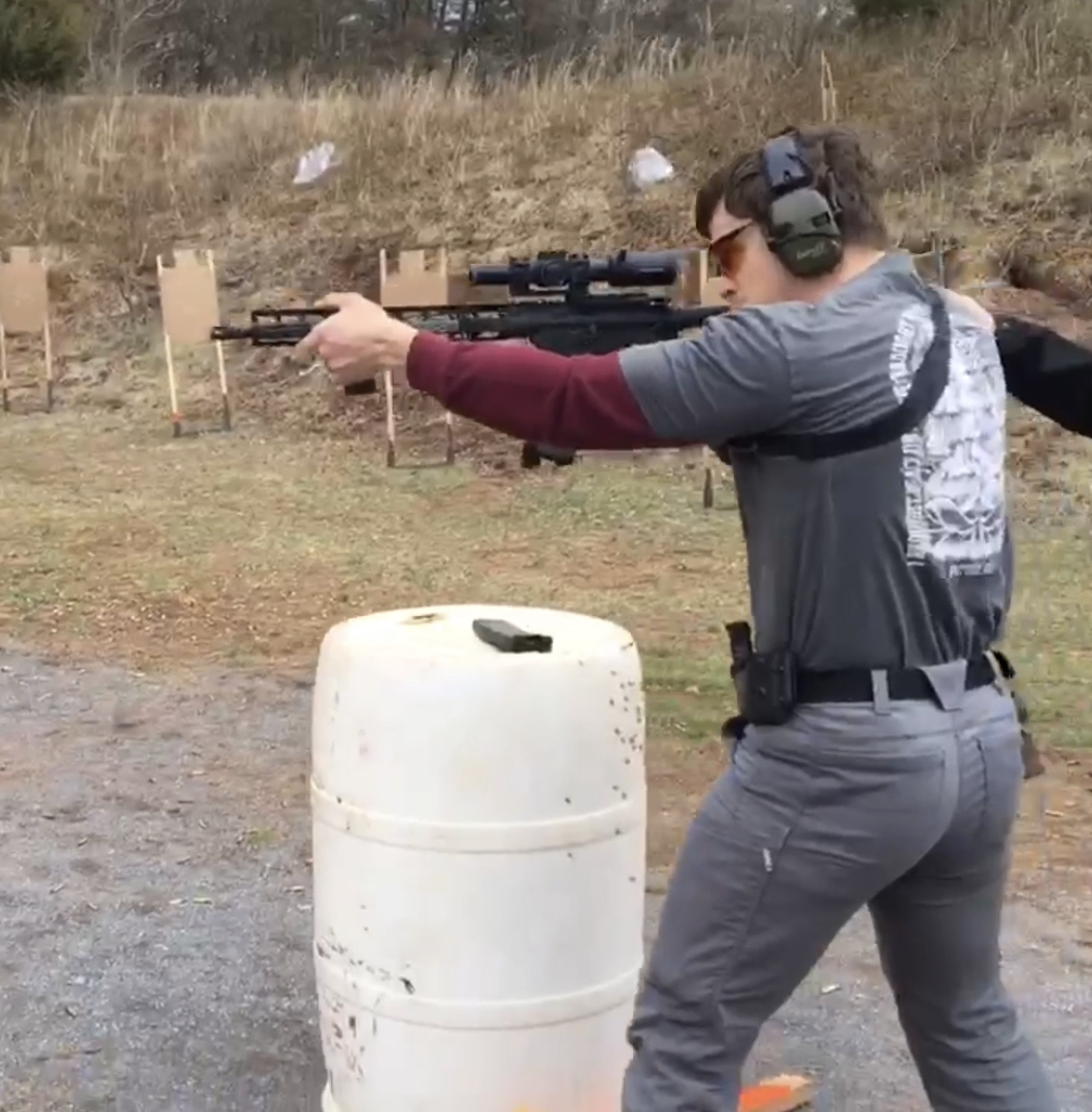
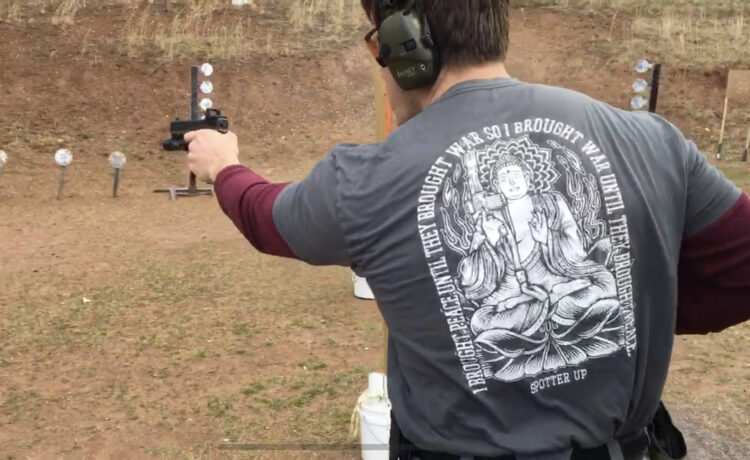
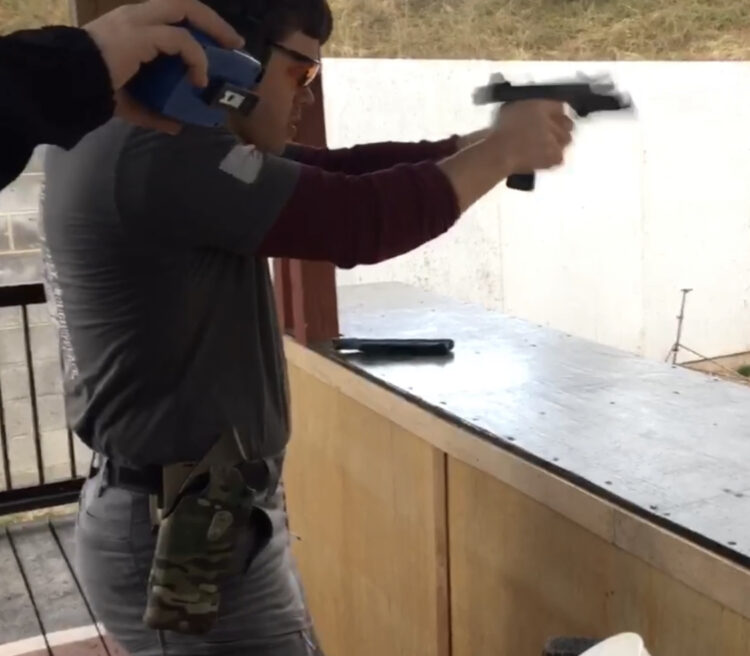
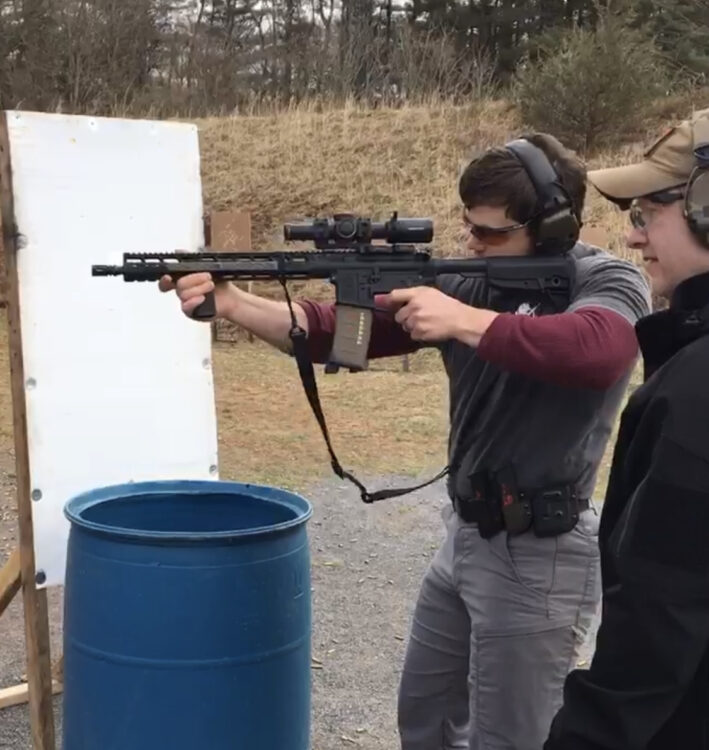
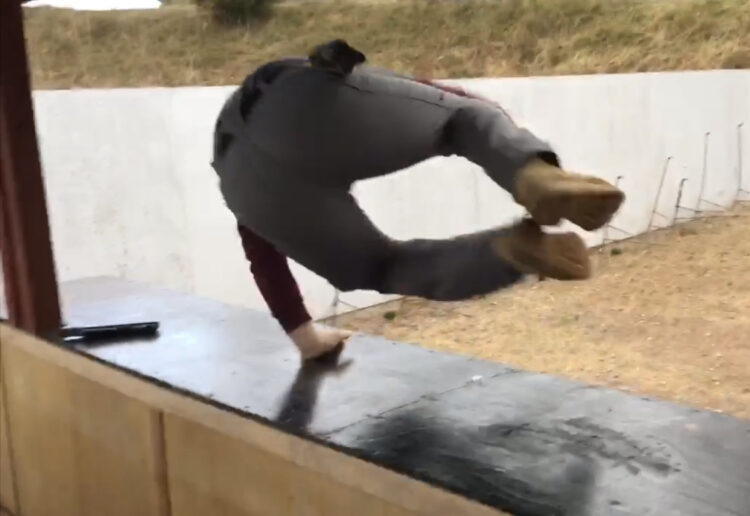
I am glad that you found it enjoyable. I have observed a couple of matches, and I really did not find it to be the welcoming environment that people often speak of. It was very exclusionary. I brought a stock Beretta 92FS and a street holster just in case I could be a walk-on. (which I could not be of course) No other person there had anything close to it. Multi-thousand dollar “race guns”, etc. Almost no one shooting production division. It has really gone away from the original intent back in 1976 when working class folks had limited time and money for practice, let alone competition.